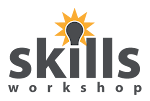 I've now had a chance to try out the Guardian film industry pullout that I wrote about on July 22nd. If you keep reading you'll also be able to locate a new Level 2 place value worksheet that I created last week to accompany it (can also be used independently). However, due to embarking upon the Level 5 numeracy diploma, I've now decided it might not be as good as I thought it was!
I've now had a chance to try out the Guardian film industry pullout that I wrote about on July 22nd. If you keep reading you'll also be able to locate a new Level 2 place value worksheet that I created last week to accompany it (can also be used independently). However, due to embarking upon the Level 5 numeracy diploma, I've now decided it might not be as good as I thought it was!Level 2 place value session
The main topic of my recent Level 2 session was large numbers (i.e. place value) and I began with one of my favourite 'large number' sites, David Levine's world population clock at http://www.ibiblio.org/lunarbin/worldpop which can be used as a prompt for all kinds of questioning and board work. I recommend pausing it by selecting today's date (or maybe one of your student's birth dates?) if you are going to ask students to translate the digits into words - otherwise the whirring last few digits can be very off-putting.
I also wanted (in order to tick the 'equality and diversity' box on the lesson plan) to use a more complicated population clock http://www.poodwaddle.com/worldclock.swf (different countries, statistics for males and females, etc.) but unfortunately the numbers were too small for clear display on the smartboard so I had to move swiftly on to the film industry poster.
It was obviously not my day for using the smartboard. Again, I had visibility problems: the PDF did not display as clearly as I had hoped and only the large graphics and figures were readable. Fortunately I had printed off an A3 version and we made do with a couple of A3 photocopies (and the original newspaper) shared around the class. (I'm lucky enough to have an old A3 printer at home; don't bother trying to print it on A4 - you won't be able to read it.)
Most of my questioning was based on interpreting the data in the large pie chart or on asking volunteers to write numbers on the poster as whole numbers (e.g. writing 54.2 billion as 54,200,000,000). At this stage, if your students require further input you might find the Level 2 place value chart useful. You can find it on the Level 2 number section of skillsworkshop.
 I then used my new worksheet to check and consolidate individual skills. The PDF version is available here or you can click the picture left for a quick thumbnail preview (don't look for it on skillsworkshop as I haven't yet had time to list it - it will appear there during October).
I then used my new worksheet to check and consolidate individual skills. The PDF version is available here or you can click the picture left for a quick thumbnail preview (don't look for it on skillsworkshop as I haven't yet had time to list it - it will appear there during October). Having now marked 14 worksheets I can report that, as suspected, the extension question caused the most difficulties. In most cases the initial subtraction was OK but there was a lot of difficulty translating the answer of 0.11bn to millions, the most common answer being 11 million rather than 110 million. Another unpopular question asked 'How are the actors listed?' (The answer was 'alphabetically').
However, I was pleasantly reassured by the grasp of maths terminology and symbols: descending and ascending order, greater than and less than - no problems!
Level 5 Numeracy Diploma
In an effort to balance up my numeracy and literacy teaching qualifications (currently weighted towards literacy) I've just started working towards the Level 5 Additional Diploma in Teaching Mathematics in the Lifelong Learning Sector (commonly known as an ADTLLS).
I've really enjoyed the first two sessions but the bad news (for me, not necessarily for you!) is that last week's learning has left me a little deflated. We were introduced to the RICH task concept and now I'm not at all happy with my film industry worksheet. You can read about rich mathematical tasks on the NRICH web site. To borrow another phrase from this site I think my worksheet needs HOTting up. HOTS is an acronym for high order thinking skills and again you can read more about it on NRICH.
However, despite my smartboard display problems I've decided that all is not lost. My introductory warm-up, firing questions and attempting to promote discussion based on the poster and the world population statistics, might not have been very RICH but I don't think it was excessively poor. There's no time left today to get into a discussion about what makes a task or resource RICH. However this thought is now always going to be in my head. The film industry resource is aimed at Level 2 but I'm also very interested in applying RICH and HOTS to my Entry 1 numeracy class. I feel that this may prove to be even more of a challenge.
And I haven't given up on the film poster yet: the original has been sent to the Resources Dept for A2 laminating and will be resurfacing later in the year for work on percentages and representing data.













